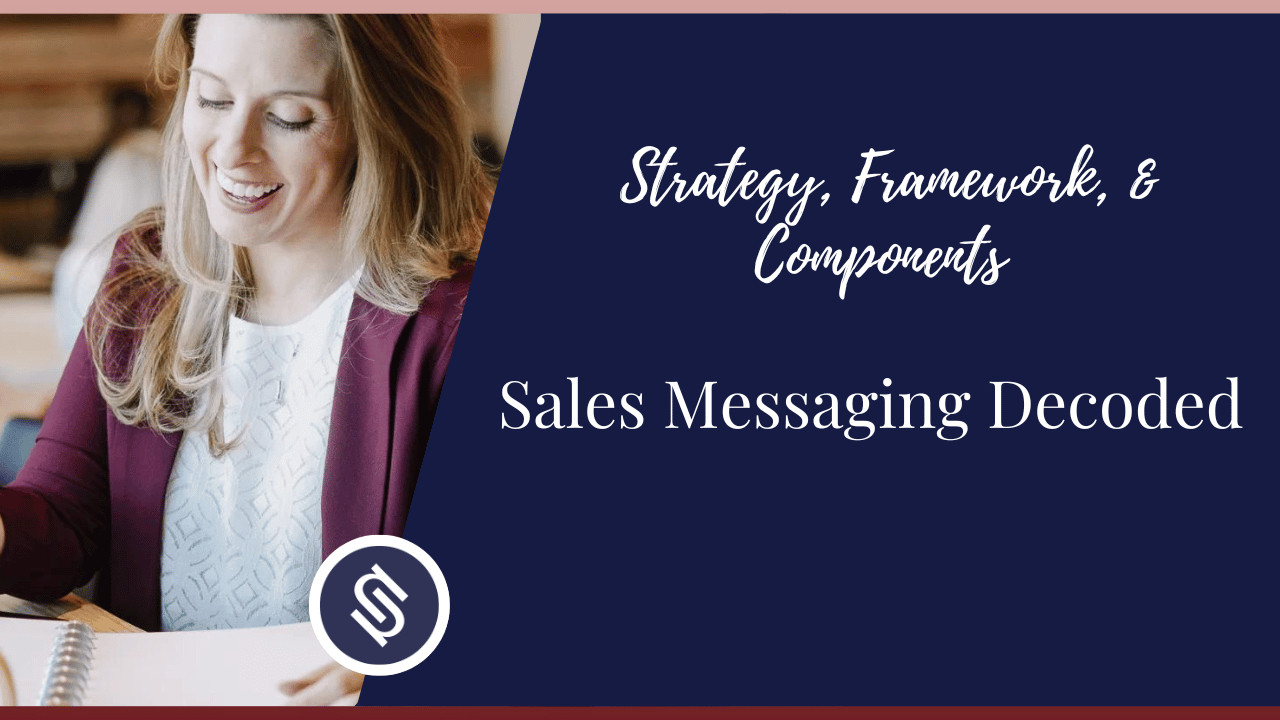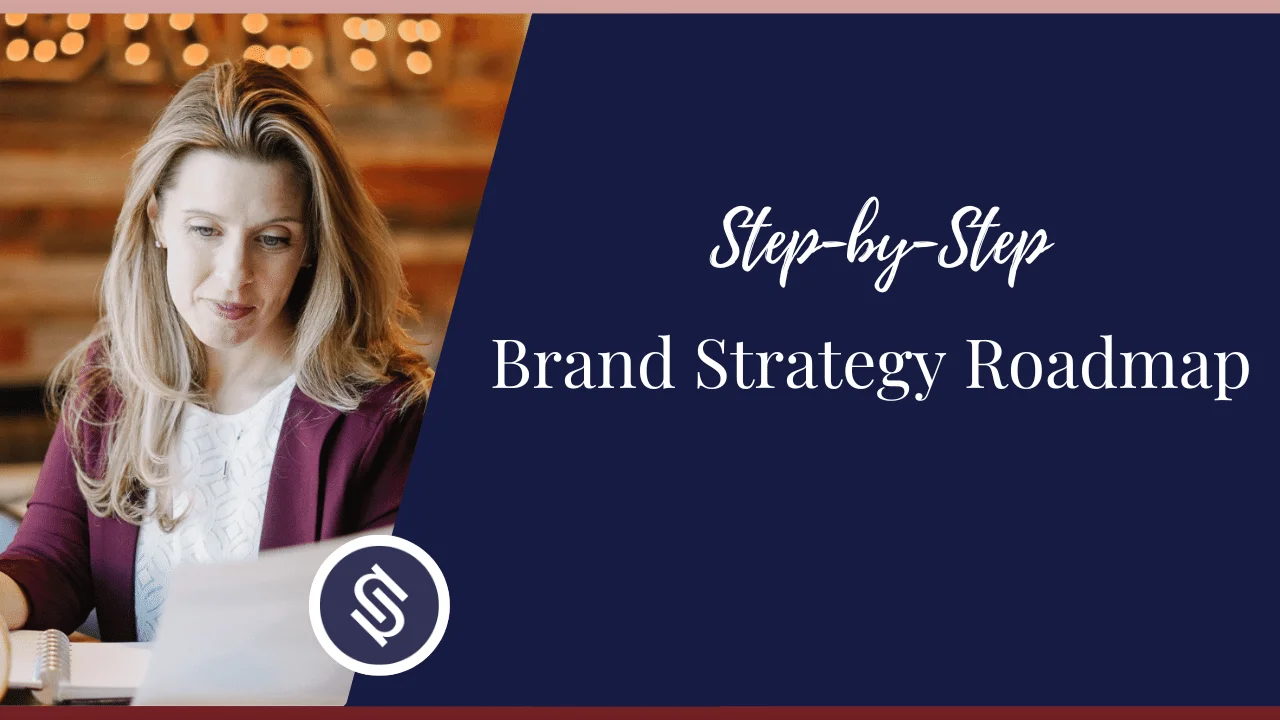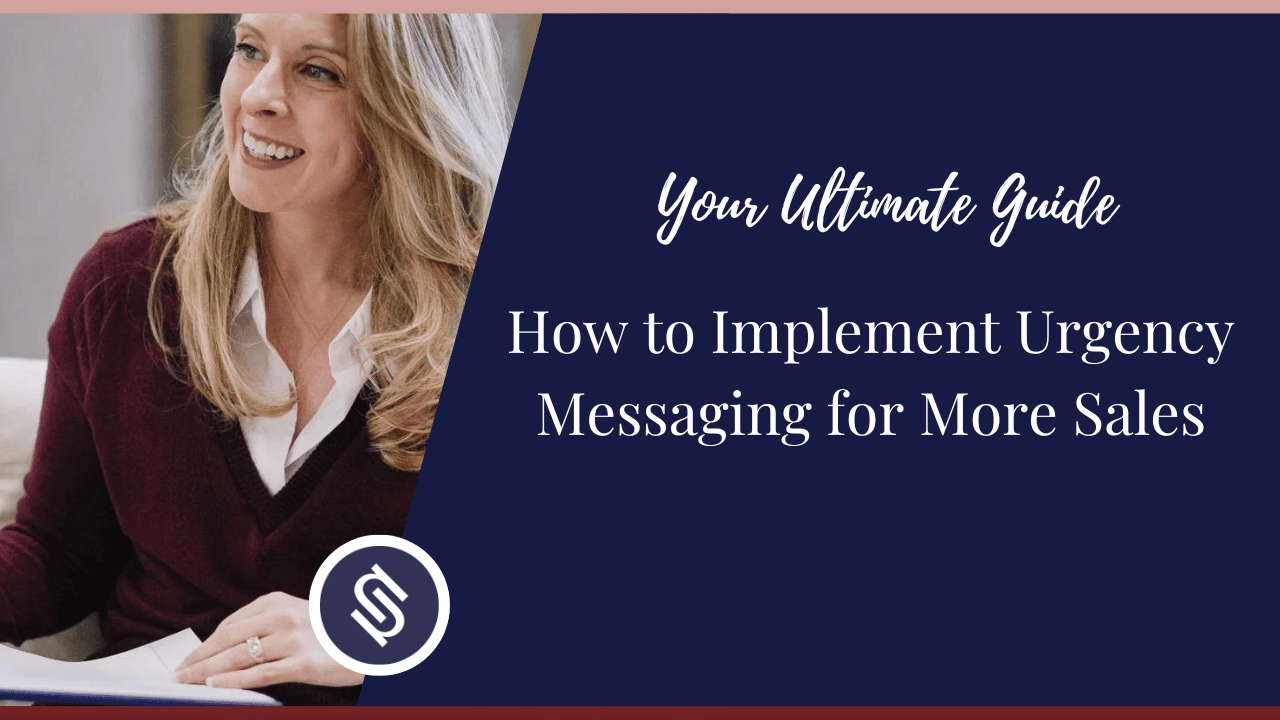In a noisy marketplace, using a marketing messaging matrix gets you noticed and makes your communication resonate with the ideal customers.
However, many businesses fail to leverage this strategy. So, they leave significant potential for engagement and conversion on the table.
Don’t miss the chance to cut through the clutter, connect with your audience, and convert them into loyal fans. Read this blog post to discover:
- What a messaging matrix is and how it can help your marketing strategy.
- The core components of developing a matrix.
- How to nail this vital marketing strategy.
TIP: To make the most of the information, consider starting a FiniSprint with me, Nora Sudduth. This mini-challenge will help you get your messaging matrix across the finish line. Stop planning and start doing!

What is a Messaging Matrix?
A messaging matrix, or message framework, is a tool that organizes and categorizes all the communication you want with your audience. The framework includes details such as:
- Target audience
- Key messages
- Communication channels
- Content themes
Tables and spreadsheets are the most common forms of a matrix. They allow for clear organization, are simple and easy to use, and can be quickly updated.
Alternatives to simple tables include infographics, mind maps, or flowcharts. These visual formats can enhance understanding and engagement, especially with the more complex message frameworks or when communicating strategies to broader audiences.
What Purpose Does it Serve?
Although a matrix is primarily a strategic tool in communications and marketing, it serves multiple purposes:
1. Clarity and Intention
The matrix shows your entire communications plan at a glance:
- What messages you communicate
- To which audience segments
- Through which channels
Keeping each piece of communication targeted and purposeful helps avoid confusion.
2. Alignment and Consistency
This communication framework ensures that:
- Your messaging is consistent across different channels and platforms.
- It aligns with the overall campaign strategy or brand.
3. Efficiency and Effectiveness
A well-thought-out messaging strategy and matrix streamline your content creation and dissemination processes. It redefines how you organize communication, helping you to:
- Promote key messages that improve overall communication retention and impact.
- Provide more agile responses to market changes.
- Better handle resource allocation.

7 Core Components of a Messaging Matrix
There are seven core components of a messaging matrix. Each one plays its part in guiding you to craft tailored messages that reach and resonate with your intended audiences. Let’s take a look:
1. Objectives or Goals
Objectives guide the entire strategy and influence how you develop your key messages, who you talk to, and on what channels.
2. Target Audiences
Understanding the audience segments helps tailor messages that resonate personally and align with your goals.
3. Key Messages
With a clear image of your target audiences and objectives, you must develop the main messages you intend to communicate.
4. Content Themes
These broader categories or topics help organize the key messages under a unified strategy, ensuring consistency across channels.
5. Communication Channels
Choosing the communication mediums depends on where your audience segments will most likely be engaged and receptive.
6. Timing and Frequency
Planning when and how often to communicate the key messages helps capture the audience’s attention and maintain engagement.
7. Success Metrics
Defining success through specific, measurable criteria aligned with your goals lets you evaluate the messaging strategy’s effectiveness.
Nailing all these components is both a science and an art. If you’re feeling overwhelmed or looking for guidance on your messaging matrix planning, book a discovery call with me, and I’ll help you gain more clarity.

How to Create Your Brand’s Messaging Matrix (Using the Core Components)
Creating a matrix for your messaging can be quite a process. It might take some back-and-forth, and you’ll learn a lot as you go. But once it clicks, your brand’s communication will be clear and focused, bringing you closer to your goals.
Here’s a step-by-step guide to developing your brand’s marketing messaging matrix:
1. Define Your Objectives
Start by outlining what you want to achieve with your communication. Objectives can range from raising brand awareness and generating leads to nurturing customer loyalty.
2. Segment Your Audience
Picture your ideal customers: who are they, and what are they like? Consider their age, interests, and what matters to them, and based on similarities, divide them into groups. Try to gauge what kind of message would resonate best with each one.
Audience segmentation defines your entire message framework, and you should research it thoroughly. Through my coaching program, you can get the professional support that will help you get it right.
3. Conduct a SWOT Analysis
Take the following quick inventory of your brand in the context of the market:
- What are you good at? (Strengths)
- Where do you have room to improve? (Weaknesses)
- What exciting opportunities are out there? (Opportunities)
- What are the challenges you face? (Threats)
This SWOT analysis will clarify your brand’s ins and outs and guide the strategic direction of your messaging.
4. Develop Key Messages
The key messages are concise statements communicating the most important and compelling aspects of your product, service, campaign, or brand.
Craft these key messages to:
- Align with your overall brand identity and objectives
- Highlight your brand’s unique value proposition
- Resonate with each audience segment
- Address their needs and interests
5. Choose Communication Channels
Identify the most effective communication channels to reach each audience segment, considering their media consumption habits and preferences. These channels or platforms could be:
- Social media
- Your website
- Blogs
- Press releases
- Offline media
6. Plan Content Themes and Types
Organize your key messages under broader content themes that reflect your brand’s story and values. Here are the types of content that can best convey these messages across your chosen channels:
- Blog posts
- Videos
- Infographics
- Case studies
- E-books
- White papers
7. Determine Timing and Frequency
Experiment to determine the best times to send your messages to each audience segment across different channels.
Your communication should sound like friendly reminders rather than a flood of messages. So, space it out and aim to maintain engagement without overwhelming your audience.
8. Set Metrics for Success
Define clear, measurable goals for each key message and channel, such as engagement rates, click-through rates, conversion rates, or social shares. These metrics can help you evaluate your message framework’s effectiveness.

How Does Audience Segmentation Impact the Messaging Matrix?
Audience segmentation can guide you at every level of matrix development, from crafting custom messages to strategically allocating resources. Here are some advantages:
1. Message Customizations
Segmentation helps you customize messages to address the particular requirements, preferences, and pain points of different audience groups.
When you know the audience segments in detail, you can create messages more likely to:
- Resonate with each group
- Support your communication goals
2. Strategic Focus
Your organization’s strategic goals are easier to accomplish when you match the right message with the right audience segment.
Imagine a company looking to promote a new financial planning app. Young professionals are one of the company’s key audience segments. To boost app adoption rates, communication with this segment should emphasize ease of use, mobile accessibility, and long-term financial growth.
3. Channel Optimization
Different audience segments may prefer specific communication channels. Audience segmentation informs what channels you should select in your matrix to ensure effective communication.
For example, younger demographics might be more active on social media platforms, whereas professional audiences might be more accessible via email or LinkedIn.

4. Timing and Frequency Adjustments
Segmentation influences when and how often you send messages. For instance, active professionals check messages early in the morning or late at night, whereas retirees check them more frequently and appreciate frequent communication.
Based on such preferences and behaviors, you can tweak the matrix to communicate in a way that optimizes engagement.
5. Feedback Loops for Refinement
As you start delivering messages and observing audience responses, you can analyze all the data at a granular level. You can then use the feedback to refine and adjust the framework and keep your communication strategies relevant and effective for each segment.
6. Enhanced Personalization
Beyond tailoring the core message, segmentation facilitates deeper personalization across the message framework. The more personalized your communication, the more chances you have of reaching the right audience and selling even in a crowded market.
You can adjust the tone, language, or content to match each segment’s cultural, linguistic, or demographic characteristics, enhancing the personal connection with individual groups.
7. Budget and Resource Allocation
Understanding the different audience segments can guide your resource and budget allocation decisions for maximum impact.
Some segments require more intensive outreach or higher-quality content. Accordingly, you can plan for all of it and customize your matrix to integrate these segment-wise approaches.

2 Relatable Examples of Effective Messaging Matrices
Let’s look at two hypothetical messaging matrix examples to illustrate the concept. You’ll see how businesses in different industries can project communication strategies to foster business growth. This approach, focusing on strategic communication planning and execution, is often the work I do as a growth consultant.
Example 1: E-commerce Brand
An e-commerce brand specializing in the latest tech gadgets might target two main audience segments — tech-savvy millennials and budget-conscious families. Here’s how the messaging matrix may look for this company:
| Segment | Tech-savvy Millennials | Budget-conscious Families |
|---|---|---|
| What They Care About | - Hottest tech trends - Cutting-edge features - Anything that makes their lives easier and more fun | - Durable, versatile, and budget-friendly tech - Learning tools for kids & work-from-home essentials for parents - Solutions and entertainment for the whole family |
| How We Reach Them | - Keep them in the loop about the latest launches, exclusive deals, and tech insights. - Use Instagram stories and partner with their favorite YouTubers. | - Send helpful email newsletters or post on Facebook. - Share detailed guides, user reviews, and comparison charts. |
| Our Key Messages | - Be the first to experience the future! - Our gadgets are packed with innovation to boost your productivity and entertainment. | - Invest in tech that lasts and benefits your whole family! - Our gadgets offer value for money and help your family learn, work, and play together. |
Example 2: Health and Wellness App
A health and wellness app may target two primary audiences — people trying to lose weight and those interested in mental health. The messaging matrix of this company may be as follows:
| Segment | People Trying to Lose Weight | People Interested in Mental Health |
|---|---|---|
| What They Care About | - Shed pounds and reach their fitness goals. | - Reduce stress and find inner peace. |
| How We Reach Them | - We keep them motivated with inspirational stories and tips on Instagram. | - We offer guided sessions on YouTube and share expert advice in our newsletter. |
| Our Key Messages | - Track your progress easily with our calorie tracker and create personalized meal plans. - We’ll empower you with the tools and the support you need to get in your best shape. | - Learn practical stress-busting techniques and mindfulness practices. - We’ll help you manage stress and cultivate mindfulness for a happier, healthier you. |
Each messaging matrix example shows how a framework can guide the development of nuanced, audience-specific messages that resonate across various channels, ultimately enhancing the effectiveness of marketing campaigns.
Can a Messaging Matrix Help Align Sales and Marketing Efforts?
Definitely. One of the strongest benefits of a matrix is its ability to bridge the gap between sales and marketing teams.
By providing a unified framework for messaging, both teams can ensure they’re speaking the same language when engaging with prospects and customers.
This alignment can keep communication consistent and improve the sales funnel’s overall effectiveness, from awareness through conversion.
What are Common Challenges in Implementing a Messaging Matrix?
Despite its benefits, creating and maintaining a messaging matrix comes with some challenges. These can include:
- Consistency Across Channels: Sometimes, the core message might change when adapting the communication for various channels. This change can lead to inconsistent messaging across platforms.
- Adaptability: Factors like rapid market changes or shifts in audience preferences can make it challenging to adapt your messaging matrix quickly.
- Measurement: Since the matrix covers various aspects like key messages, target audience, communication channels, etc., it may be challenging to measure the performance of your matrix.
Overcoming these challenges requires an ongoing review of the matrix. You must incorporate regular feedback loops from sales, marketing, and, most importantly, the customers themselves.
Conclusion
So now you know the practical steps to get started with messaging matrices.
Remember: you need a strategic approach to cut through the noise and connect with your audience on a deeper level. This approach requires that you clearly define your objectives, segment your audience, develop key messages, and so much more.
Need some personalized guidance? As a messaging strategist and business coach, I’m ready to help you take any communications task or project from to-do to done!
Book a discovery call to tell me more about your specific needs so we can nail the messaging matrix for your company.







